Therapy for phonological processes does not have to be hard or tricky. It is actually one of my favorite types of therapy to do! I love to see how working on just a few sounds (whether in Cycles, Minimal Pairs, or Complexity Approach) can get huge results and carry over into other sounds.
Treatment for Phonological Disorder
Here’s a quick look into my life currently. I have a wild little 3-year-old guy who is wide-open all the time. But in addition, he is also precious, sweet, snuggly, and all those good things too! And, he, like most 3-year-olds, can be hard to understand at times.
Now, since his mama is an SLP, he has already been informally “evaluated,” and his speech is fairly typical for his age. But, that doesn’t mean his errors don’t cause some issues at times. For example, one pattern in his speech right now is – cluster reduction. Those tricky /s/ blends are particularly difficult.
Because I know this, I can understand what he says 99% of the time and I can “translate” for him. No big deal, right? Well, my sweet hubby kindly asked if we could maybe work on these sounds the other based on one errored word in particular… The word is “stick.” Now, remember, this is our wild, outdoor-loving, all-boy little boy. Therefore, stick is a pretty frequent, relevant word for him. Problem is, with his cluster reduction, he deletes the /s/ and vocalizes the /t/… whoops! See the slight problem? Cluster reduction (deletion of one or more sounds in a blend) is just one example of a phonological process.
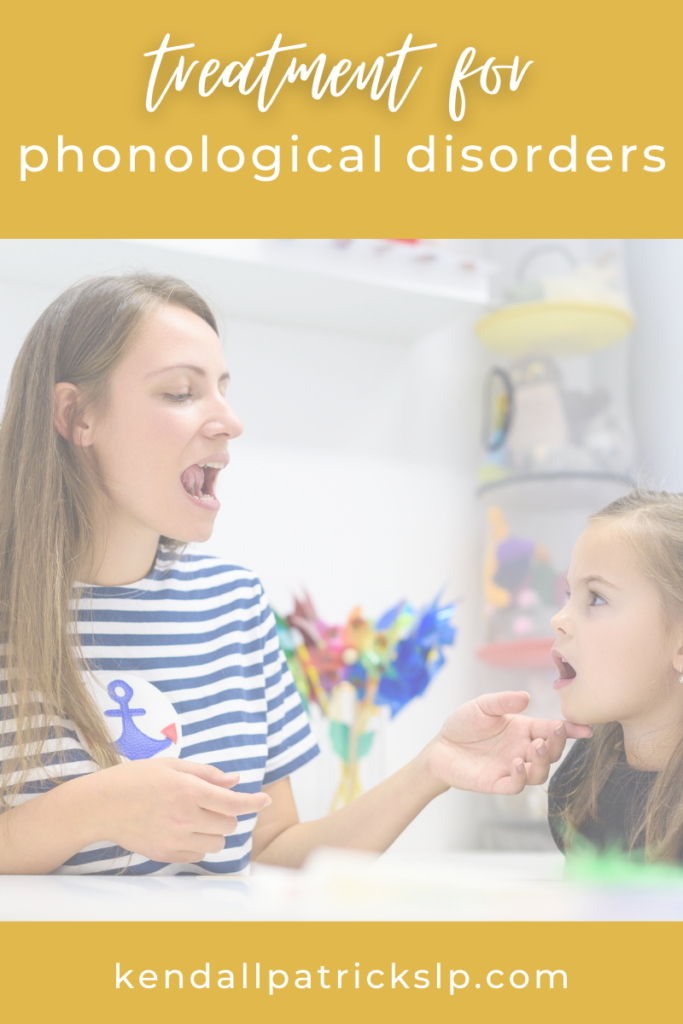
What are Phonological Processes?
A phonological process disorder is a form of speech and language disorder in which there are predictable, rule-based errors that typically affect more than one sound. These patterns are typically sound or syllable deletions, sound substitutions, or additions.
| Phonological Process | Example |
| Final Consonant Deletion | “dah” for “dog” or “ha” for “hat” |
| Assimilation | “doddy” for “doggy” or “chichen” for “chicken” |
| Fronting | “dame” for “game” or “sue” for “shoe” |
| Deaffrication | “wash” for “watch” |
| Weak Syllable Deletion | “el-phant” for “el-e-phant” |
| Stopping | “tope” for “soap” or “dibe” for “dive” |
| Cluster Reduction | “boom” for “broom” or “top” for “stop” |
| Gliding | “yunch” for “lunch” or “wed” for “red” |
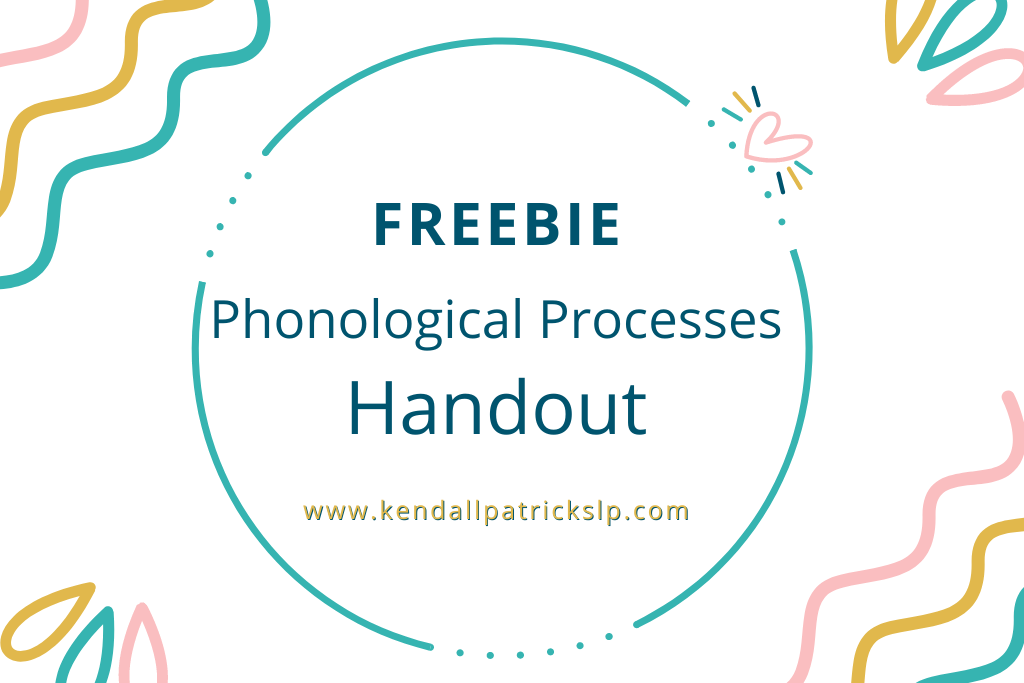
How to Treat Phonological Processes
Phonological processes disorders are actually language-based disorders that occur at the phonemic level. Therefore, children with phonological processes disorder need to learn to organize their sounds into a system in order to use them correctly in connected speech. Oftentimes, these children struggle with phonemic awareness and research shows that difficulty in these areas is a strong predictor of poor reading and spelling development. This greatly supports the need to intervene early to treat phonological processes disorders. In order to do that, we need to know what they look like and what typical development looks like.
Speech Therapy for Phonological Processes
The Complexity Approach
The Complexity Approach introduces more complex sounds first in order to help generalize corrections to untreated sounds as well.
This might look like: targeting /s/ blends in therapy first, and /s, z/ errors are also corrected without ever formally addressing those sounds in isolation in therapy.
For more information on treating /s/ blends in speech therapy, check out my blog post here.
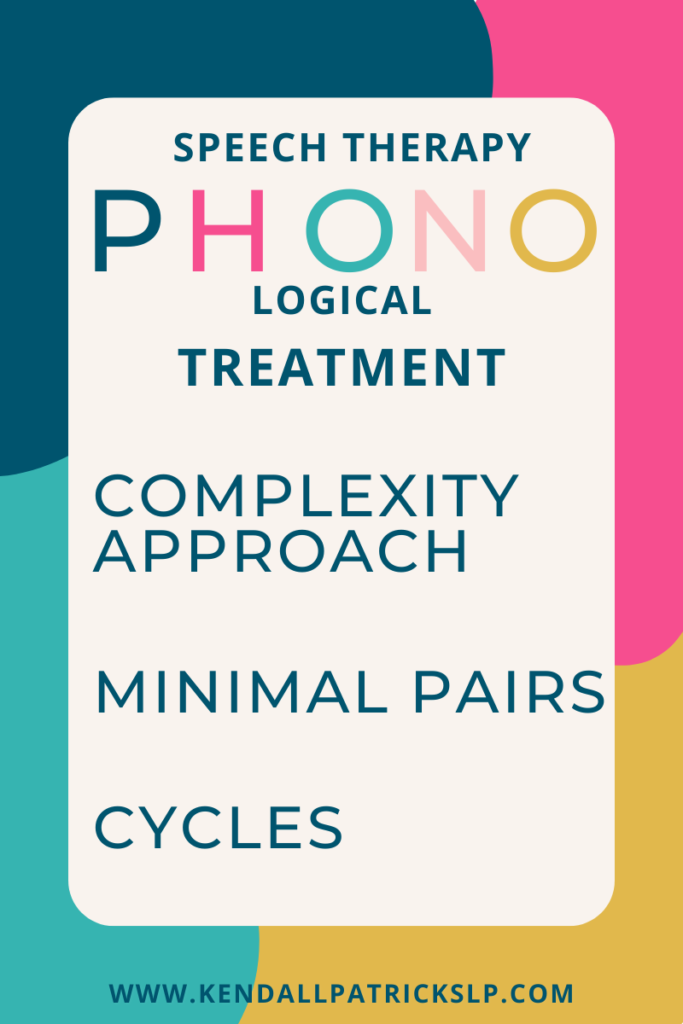
Minimal Pairs Approach
The minimal pairs approach is highly effective in treating phonological processes as well and is great to pair with other phonemic awareness tasks. In this approach, the therapist pairs words that differ in just one way – one word that child can produce and one that contains the target sound. For example, if the child is currently fronting, a word pair may be: “doe” (a picture of a deer) and “go” (a green go sign). “Go” is the target word, but if a child says “doe” even when you know they mean to say “go,” you point to what they actually say. After that, continue with the game (as well as modeling the correct production of “go”) until the correct production is made.
What is the Cycles Approach – Phonological Processes?
The Cycles Approach, developed by Barbara Hodson, is an approach in which you target each phonological process for a short, fixed amount of time and cycle through other phonological processes. This approach is certainly ideal for children with a lot of error patterns.
Here is what it might look like:
Week 1: final consonants
Week 2: final /k/
Week 3: initial /k/
Week 4-10: initial /s/ blends
Week 11-13: final /s/ blends
Week 14: initial /l/
Week 15: initial /r/
It can be difficult to move on to the next cycle when you know they haven’t reached mastery, but it is so worth it and you will see results! You will be amazed at how much progress they will make just after addressing /s/ blends. Although it may seem too complex to target those sounds early on, research actually supports targeting the more difficult sounds first. Once they have mastered (or even just made some progress) on those blends, you will see progress in earlier developing sounds as well. I have found that using this approach I don’t even have to target /s/ and /z/ individually as they come along on their own!
In my store, I have some worksheets that are perfect to pair with the Cycles Approach. Click here to download it now.
Here is what a single session working on an /s/ blend target might look like:
Auditory Bombardment: SLP orally presents target words (e.g., stew, step, stick, stop, stone) and the student just listens (they do not participate in saying the words).
Introduce new sounds as “friends.” Example: This is Mr. S and Mr. T. Mr. /s/ was feeling very lonely because he wanted a friend. Then, along comes Mr. /t/. They then go on a walk together, but it is very important they stay together!
Next, practice sounds with tactile cues: I like to have the student move their finger along the table as they say the /s/ sound and tap as they say the /t/ (as seen below).
After that, practice target words (stick to the simpler, 1 syllable words if needed) and repeat with lots and lots of trials.
Finally, model in phrases and sentences and (if appropriate) have students repeat the modeled phrases/sentences.
For more on how I treat /s/ blends in therapy, check out my blog post on it here.
To download my /s/ blend worksheets that include everything you need to work on initial and final /s/ blends, check it out here.
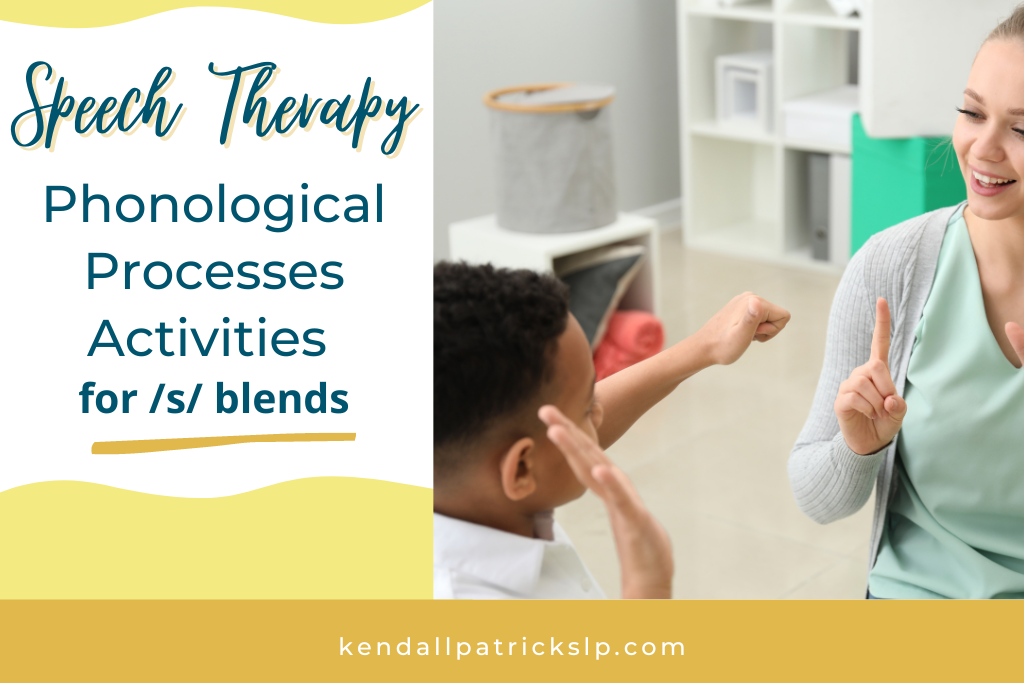
Speech Therapy Goals for Phonological Processes
A speech IEP goals bank is a great place to start when writing a new IEP, especially when you are new to the schools. While absolutely IEP goals for speech should always be individualized, it doesn’t hurt to have a place to start. My IEP goals bank is a brief but inclusive list of a variety of goals that target various areas of speech and language therapy.
My IEP goals bank includes goals for various areas of communication including articulation, fluency, apraxia, phonological awareness, vocabulary, grammar, and story retell.
Basic Articulation/Phonological Goals
STUDENT will accurately produce ____ sound in syllables and words with 90% accuracy as measured by therapy data and progress monitoring.
STUDENT will accurately produce ____ sounds in isolation, words, and phrases with 90% accuracy across 3 therapy sessions as measured by therapy data and progress monitoring.
For more on how I write my IEP goals, check out this blog post!
Goals Geared Toward Cycles Approach
When writing goals for this approach, many will write that the child will reduce the phonological processes of x, y, z. But instead of writing what the child will not do, I like to write what they will do, as I find it to be more measurable and easier for families to understand.
So my goals may look similar to other speech goals, but will include a lot more sounds as we will be cycling through them all. The example below is based on the sample cycles plan from above:
During structured phonological therapy tasks, STUDENT will accurately produce the following sounds: final consonants, /k/, /s/ blends, and initial /l, r/ in words with 60% accuracy as measured by therapy data and progress monitoring.
My percentage may be lower for these goals as we will be cycling quickly through many sounds and initial accuracy was probably pretty low to begin with.
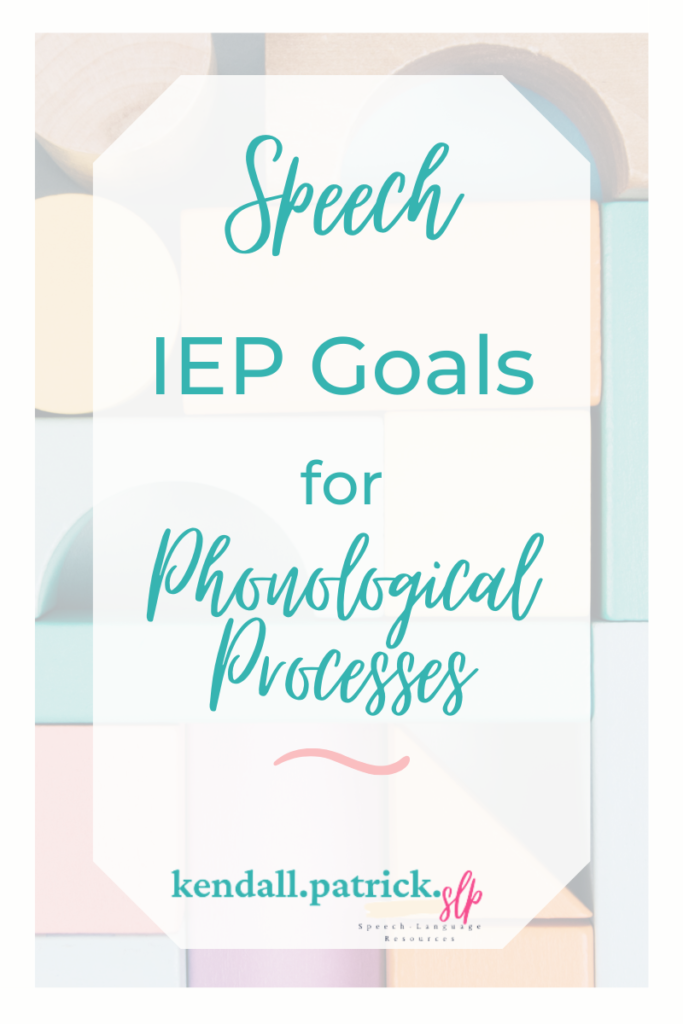
Goals Geared Toward Minimal/Maximal Pairs Approaches
During structured therapy tasks, STUDENT will accurately produce words with contrasting sound pairs (e.g., D/K, D/G, T/K, T/G with 80% accuracy as measured by therapy data and observation.
During structured therapy tasks, STUDENT will accurately produce the following sounds: _____ accurately in syllables and words with 70% accuracy as measured by therapy data and observation.
For more Therapy for Phonological Processes Ideas:
Phonological Processes Disorder
Which Phonological Therapy Approach Should You Use? from Adventures in Speech Pathology
What are Phonological Processes from Mommy Speech Therapy
Don’t forget to sign up with your email address here to get access to my free library full of some of my goodies made exclusively for my followers.
I hope you found these therapy for phonological processes ideas helpful and can use one or more in your therapy room this year. Please leave a comment or shoot me an email if you want to share some of your favorite therapy for phonological processes tips.


